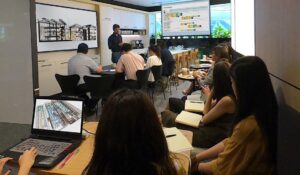The discovery of Sick Building Syndrome (SBS) identified in the 1970s and acknowledged by the World Health Organization in 1983, brought to light ailments caused by factors like poor ventilation, chemical contaminants, and toxic building materials, leading to symptoms ranging from headaches to respiratory issues in building occupants.
The response to SBS evolved from merely identifying problems to seeking out solutions, marking a significant shift towards precision and prevention in building health. This movement away from the nebulous SBS towards targeted diagnostics and remedies heralded a new era in building standards, with a focus on indoor air quality, ventilation, and the use of non-toxic materials.
The development of certifications such as LEED (Leadership in Energy and Environmental Design) by the U.S. Green Building Council and the WELL Building Standard emphasized not only environmental sustainability but also the health and well-being of building occupants. LEED focuses on sustainable practices and the comfort of occupants, while WELL specifically targets features that enhance health, from air quality to lighting.
The transformation in building practices owes much to increased public awareness, regulatory action by bodies like the EPA and WHO, and scientific research, all of which have driven the adoption of healthier building technologies and materials. These efforts underscore the importance of creating spaces that not only minimize environmental impact but also promote occupant health.
Today, the legacy of SBS serves as a reminder of the ongoing journey toward healthier living spaces.
Special thanks to Khee Poh Lam, Provost’s Chair Professor of Architecture and the Built Environment at National University of Singapore, who reminded us of the legacy of Sick Building Syndrome, which we had all but forgotten about.
He brought this up in panel discussion at the regional WELL Summit a week ago with the point that we focused on naming the problem “sick” previously whereas we now focus on the more positive solution “WELL”.
#EnvironmentalSustainability #WELLSummit #WHO #Wellbeing #Environment #WorkplaceWellness #BuildingDesign #SBS #LEED




